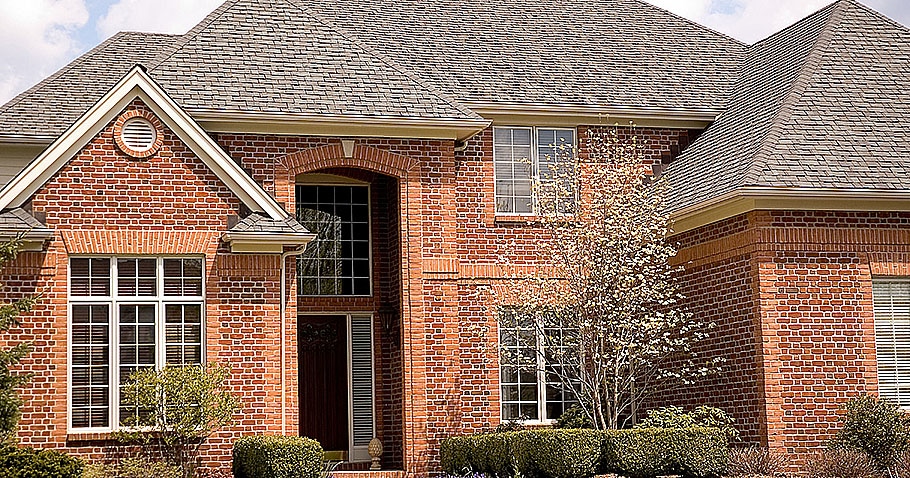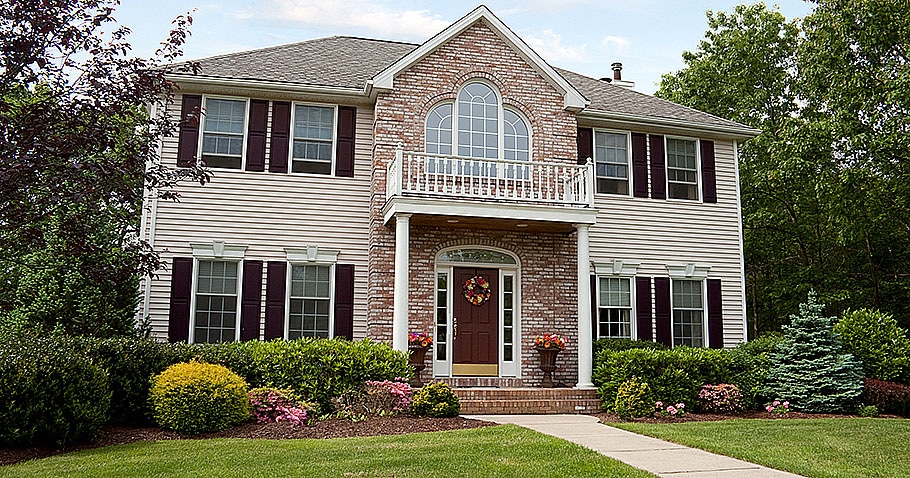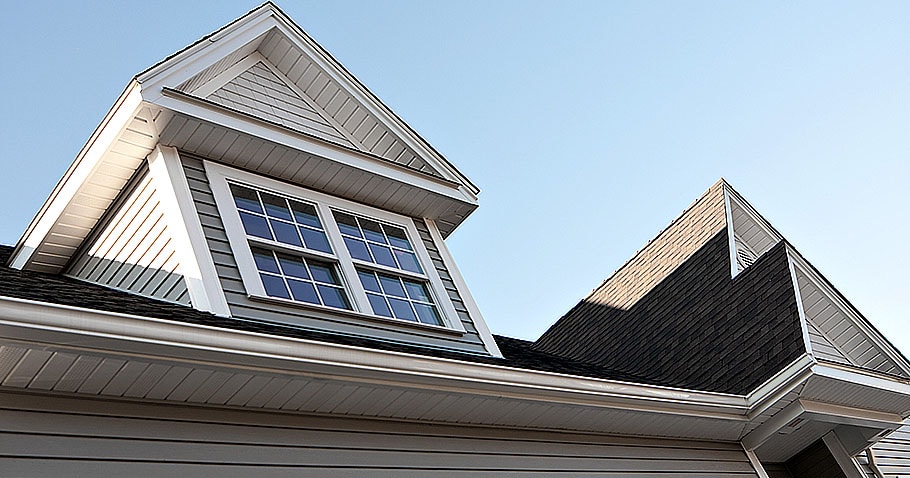Roofs are one of the most durable components of your house. However, factors like storms, water, and improper installation or repairs can lead to damage. These damages don’t become apparent until a small problem is grown into a bigger problem. So, if you see these signs, you should consider roof repair as soon as possible.
Missing Or Damaged Shingles
An obvious sign that your roof requires your attention is missing and damaged shingles. You can detect this from a distance as well. Missing shingles will result in roof leakage and heat loss in winter. The same is with damaged shingles because water will seep through cracked shingles and also heat will leave the house through the cracks.
A common cause of missing shingles is a storm or hail. Due to a storm, the blows of the wind can riff some shingles off your roof and can also crack or damage many others. Moreover, branches can fall on the roof and damage or remove shingles.
Hail damage to shingles is not immediate because it doesn’t rip them off right away. It speeds up the deterioration of the shingles by removing the shingle granules – the uneven covering on the shingles that make them durable and long-lasting. If these granules on shingles begin wearing off, this will leave the shingles unprotected and they will become prone to damage.
A sign of damaged shingles is the accumulation of shingle granules in gutters. This shows that shingles’ granules are wearing off. To spot shingle granules, look for black sand in gutters.
This is why it’s critical to inspect your roof after a hail or storm and make sure that there is no damage. If there are damaged shingles or you find shingles missing, you should fix them before it leads to further damage.
Curling Shingles
Curled and cupped shingles are a bit difficult to spot from a distance. Mostly, if you notice anything, it will be the roof appearing funny and uneven. So, a close inspection is necessary to determine if your roof shingles are curling. Other common problems along with curling shingles are cupping and buckling.
- Curling Shingles means that the edges of the shingles are turning up.
- Buckling shingles appear pushed up from one vertical end.
- Cupping is when a shingle becomes concave from the center.
The cause of curling, buckling, or cupping shingles can be storm/hail damage. Moreover, old roofs begin to show signs of aging with curled shingled.
Another reason for curling shingles is moisture damage. If moisture is trapped under the roof decking before the installation of shingles, they may become curled soon. This is because excessive moisture makes the decking shift resulting in curling and buckling shingles.
Moreover, fluctuations in the temperature can make the shingles shrink and can cause buckling or curling. It can also be due to improper storage of shingles before installation, poor quality materials, improper installation, and moisture absorbed by the felt underlayment.
Rotting Roof
Roof rot is the deterioration of your roof and it’s mainly caused by moisture and humidity.
In most cases, a rotting roof is beyond repair and you should consider replacing the roof at once. In some cases, the roof sheathing rots as well. If this happens, you may need to replace it as well with the shingles.
This is why a roof inspection is necessary if you see any signs of roof rotting so a roofer can guide you correctly.
Sagging Roof
A sagging roof is a serious problem and you should act quickly if you notice sags in your roof. Not all roof sagging is dangerous. If your roof is bulging inward a little, it may be repaired, but if the bulge is more noticeable, you may be looking at a complete roof replacement.
Due to this, it’s critical to let a professional inspect your roof so they can assess the damage and suggest you the steps you should take for fixing this problem.
Keep in mind that you should also be looking into ways to avoid a sagging roof if you repair or replace your roof. A common cause of a sagging roof is water damage. There are many reasons for water damage like damaged shingles, missing shingles, curved shingles, and improper installation. Moreover, too much weight on the roof due to heavy snowfall or heavy roofing materials, too less roof joints and rafters, and old age can lead to a bulged roof as well.
Roof Stains
You may see black or red stains on the roof and they also hint at roof problems.
Black stains on roofs can be due to algae growth or asphalt bleed-through. Black stains due to algae are common and mostly harmless if you clean your roof every 2-3 months or so. As algae grow naturally, you can’t prevent it completely. So, cleaning is the only solution.
Beware though that if black algae are not cleaned, it may keep feeding on the limestone filler of asphalt shingles and can also hold moisture and cause moisture damage. Moreover, it can also lead to lichen which is harder to remove.
Another cause of black stains on roofs is asphalt bleed-through. It happens due to the near-end life of the roofing material or the use of poor-quality materials. You should repair your roof or consider a replacement.
On the other hand, red or brown stains are because of rust. They are caused by rusted metal elements on the roof like metal chimney caps, flashing, and others. Your chimney must be inspected if there are red stains on it.
Ceiling Stains
Stains on the ceiling is a sign of water damage to the roof. You may see stains, blisters, discoloration, and anything similar on the ceiling.
Before you worry about your roof, you should look at the color of the stain. The stain’s color can tell you if the stain is due to a roof issue or any other reason like condensation or plumbing leaks.
Old Age
Like other materials, roofing deteriorates with time as well. If your roof is old enough, you will see the signs like moisture damage, missing shingles, rot, sagging, stains, and other things. You should properly maintain your roof to extend its life, but when it comes near its lifespan, you may need to replace it for your safety.
Different types of shingles have different lifespans. Asphalt shingles last up to 15-30 years, metal shingles 30-45 years, concrete tiles 35-50 years, rubber shingles 10-15 years, and cedar shingles 30-50 years. However, if your roof is more than 20 years old, you should get it inspected.
Mold Growth Where The Roof And Wall Connect With Each Other
Mold growth anywhere in your house is a bad sign and it shows that there is excessive moisture mostly due to leakage. If you spot mold in the area where the roof and wall meet, the cause can be an issue with gutters. Avoid fixing mold growth by cleaning the mold because it won’t fix the actual problem.
Conclusion
A damaged roof can be dangerous and in severe cases, it can collapse leading to the loss of lives and property damage. Make sure to inspect your roof regularly and get it repaired by a roofing contractor if you spot any of the above signs of roof damage. brus








Comments